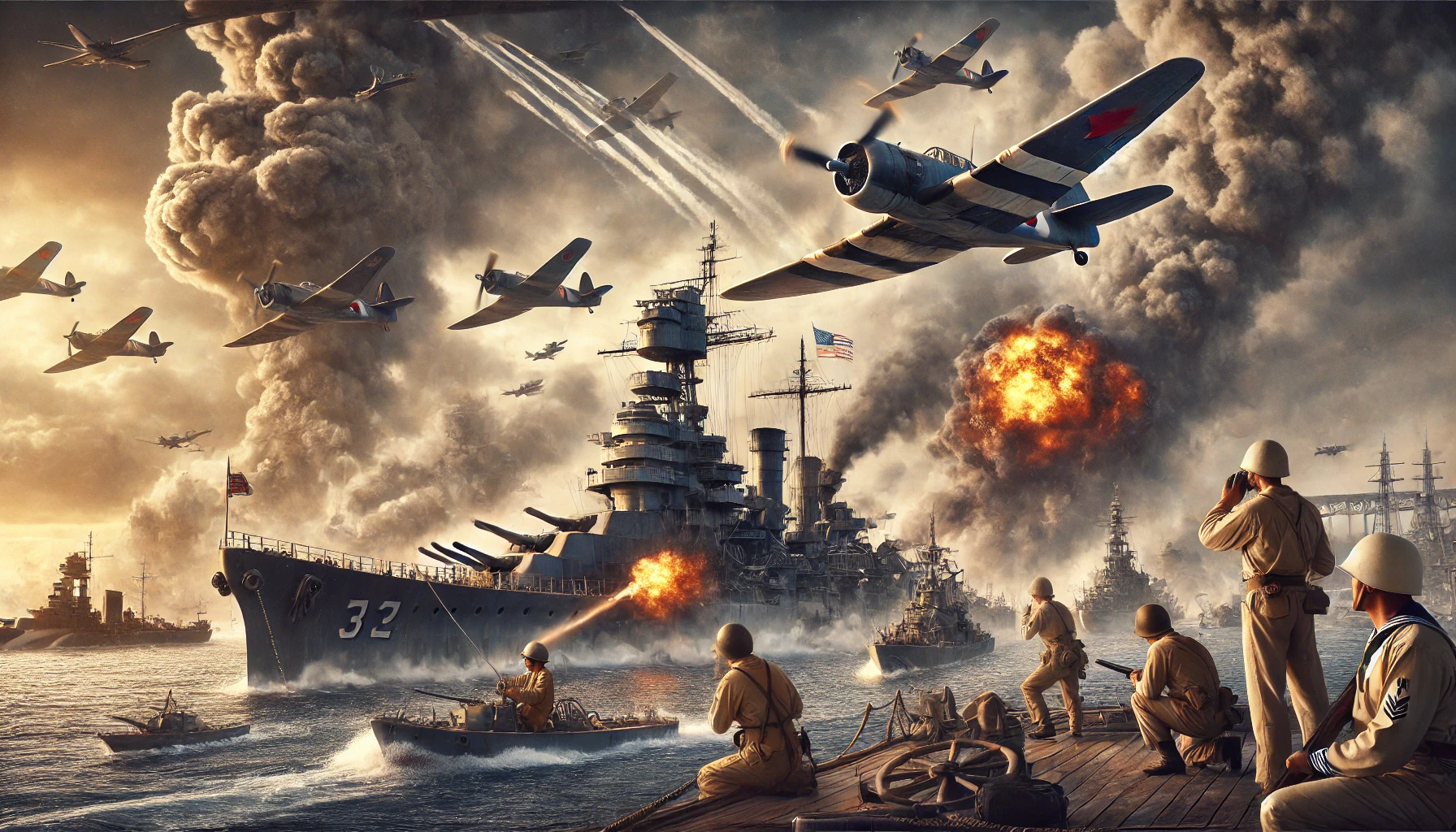5 Incredible Tales of War and Attacks -- You've Never Heard About #4
The Bombing of Pearl Harbor, 1941 – The Day That Changed America
On December 7, 1941, the world changed in an instant. What started as a quiet Sunday morning in Hawaii quickly turned into chaos when Japanese fighter planes filled the skies over Pearl Harbor, launching a surprise attack on the U.S. Pacific Fleet. The attack lasted just under two hours, but the devastation was immense. More than 2,400 Americans lost their lives, 1,178 were wounded, and several battleships, including the USS Arizona, were destroyed or severely damaged.

This attack propelled the United States into World War II, a conflict that would redefine global history. Before Pearl Harbor, the U.S. had maintained a neutral stance, but after President Franklin D. Roosevelt declared December 7 “a date which will live in infamy,” the country mobilized for war. The attack galvanized a generation, leading to one of the largest military build-ups in history.
Even today, the lessons of Pearl Harbor remain relevant. It serves as a reminder of the importance of vigilance, military preparedness, and international diplomacy. The Pearl Harbor National Memorial now stands as a tribute to those who lost their lives, ensuring that their sacrifices are never forgotten.
The Nazi Invasion, 1944 – A Fight for Survival
The year 1944 was a crucial turning point in World War II. Across Europe, Nazi Germany’s occupation brought fear, oppression, and unimaginable suffering. For Jewish families, resistance fighters, and civilians, survival often meant running, hiding, or fighting back in any way they could.
The Nazi regime, under Adolf Hitler, had systematically expanded its control over Europe, with the Holocaust in full force. Jewish families faced brutal persecution, and those caught were often sent to concentration camps, where over six million Jews perished during the war.
Yet, 1944 also marked the beginning of the end for Nazi Germany. The Allies launched key offensives, including the D-Day invasion, which pushed German forces back. Meanwhile, brave individuals across Europe risked everything to resist the Nazi occupation. The underground resistance movements played a crucial role in helping Jews escape, sabotaging enemy plans, and passing along vital intelligence.
The atrocities of the Nazi invasion remain one of the darkest chapters in history, but they also showcase extraordinary human resilience and courage. Today, we remember those who fought and suffered, ensuring such horrors never happen again.
The Battle of D-Day, 1944 – The Fight for Freedom
On June 6, 1944, history witnessed one of the most ambitious military operations ever attempted: D-Day. More than 156,000 Allied troops stormed the beaches of Normandy, France, in a desperate bid to liberate Europe from Nazi control. It was a battle that would ultimately lead to the downfall of Hitler’s regime.
The scale of D-Day was staggering. The operation involved over 5,000 ships, 11,000 aircraft, and a meticulously planned amphibious assault. The soldiers, many of whom were young and inexperienced, faced machine-gun fire, artillery bombardments, and brutal conditions. Despite the heavy resistance, they persevered, securing a foothold that allowed the Allies to advance through France and eventually into Germany.
The battle came at a steep cost—over 4,400 Allied troops were killed, and thousands more were wounded. Yet, their sacrifice was not in vain. D-Day turned the tide of the war, signaling the beginning of the end for Nazi Germany.
Today, the beaches of Normandy stand as a testament to bravery, with memorials honoring those who fought for freedom. D-Day reminds us that courage and determination can change the course of history.
The American Revolution, 1776 – A Nation is Born
In 1776, thirteen American colonies stood at a crossroads: remain under British rule or fight for independence. What followed was a war that would shape the United States forever.
The American Revolution wasn’t just about battles; it was about ideas—liberty, self-governance, and the right to pursue happiness. Tensions between Britain and the colonies had been rising for years due to taxation without representation and harsh British policies. Then, on July 4, 1776, the Declaration of Independence was signed, formally breaking ties with Britain.
The war itself was long and grueling, lasting until 1783. The Continental Army, led by George Washington, faced numerous hardships, from lack of supplies to freezing winters. Yet, against all odds, the Americans secured victory, thanks in part to alliances with France and the resilience of their forces.
The Revolution didn’t just birth a new nation—it inspired democratic movements around the world. Today, the principles fought for in 1776 remain a cornerstone of American identity.
The Battle of Gettysburg, 1863 – A Turning Point in the Civil War
The Battle of Gettysburg, fought from July 1-3, 1863, was the deadliest battle of the American Civil War and a defining moment in U.S. history. Over 50,000 soldiers were killed, wounded, or missing in just three days.
The stakes were high. Confederate General Robert E. Lee aimed to invade the North and force a surrender. However, Union forces, led by General George Meade, stood their ground, delivering a decisive victory that halted Lee’s advance. The battle’s climax came on July 3 with Pickett’s Charge—a failed Confederate assault that resulted in massive casualties.
Gettysburg was more than just a battle; it was a turning point. The Union victory shifted the momentum of the war, weakening the Confederacy’s ability to fight. Later that year, President Abraham Lincoln delivered the Gettysburg Address, reaffirming the principles of liberty and unity.
Today, Gettysburg is one of the most visited historic battlefields in America, serving as a reminder of the sacrifices made to preserve the nation.